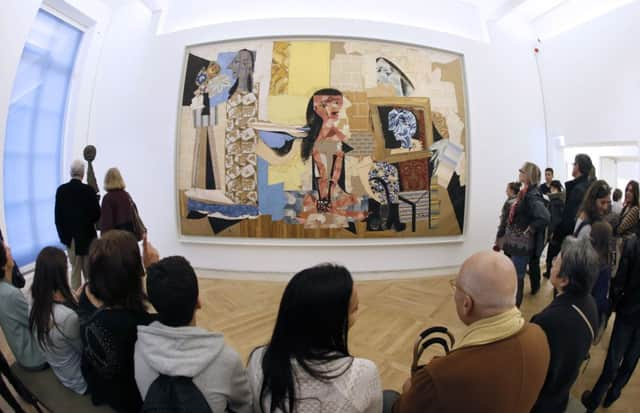The Picasso Museum in Paris finally reopens


Opening the museum yesterday, French president François Hollande urged crisis-hit France to draw inspiration from the Spanish painter who made France his home.
The museum, located in a 17th-century mansion in the Marais district, houses one of the world’s largest collections of Pablo Picasso’s work, including more than 5,000 paintings, sculptures and prints as well as his personal archives.
Advertisement
Hide AdAdvertisement
Hide AdThe long-awaited reopening took place on his birthday. He was born in Malaga, Spain, on 25 October, 1881, but spent most of his adult life in France until his death in 1973.
However, the renovation was marked by repeated delays, infighting and controversy.
Glossing over these yesterday, Hollande insisted Picasso’s modernity and energy should inspire all of France.
“You don’t build anything on nostalgia. Pablo Picasso was a painter of the future, of hope, of conquests, he freed himself from the rules of the past. He was avant-garde. France is an avant-garde country,” he said.
During the renovations, the French government sacked museum president Anne Baldassari after she came in for criticism, both personal and professional. The minister for culture and communications even deemed “saving’ the museum “a social emergency”. Baldassari, once considered one of the world’s foremost Picasso experts and curators, was fired in May after more than 20 years working for the museum and nine as its nationally appointed president.
Her dismissal prompted Claude Picasso, who supported her, to accuse the government of not valuing his father’s work and of dragging its feet over the reopening.
The renovation has tripled the size of the exhibition space over five floors, making it more accessible to an expected one million visitors a year.
It originally opened in 1985, 12 years after Picasso’s death, with an archive of 200,000 pieces of his work, only 5,000 of which were put on display.
Advertisement
Hide AdAdvertisement
Hide AdMost of the exhibits were left to the state on his death by the Picasso family in lieu of inheritance tax. Others were donated by his family including his widow Jacqueline.
When it closed for refurbishment in 2009 it was expected to re-open in 2011 with an expanded exhibition space to display far more of its collection.
By converting the building’s offices, stables and basement into exhibition space, the museum is now more than double its former size.
It is an architectural feat that new director Laurent Le Bon claims will allow “visitors a freedom which goes well with the spirit of Picasso”.
In future, the museum is expected to hold one major exhibition each year. The first in mid-2015 in collaboration with New York’s Museum of Modern Art will take Picasso’s sculpture as its theme.
The museum has an attic space with a view over Paris which now houses paintings by artists including Renoir, Matisse and Modigliani, which Picasso himself collected.
The conversion for the 1985 opening was carried out by Roland Simounet and aimed to create the ideal showcase for Picasso’s work while also allowing the public to glimpse a great pre-Revolution mansion.
What is now on offer is a world away from that. The refurbished building boasts minimalist exhibition spaces characterised by grey terrazzo, bare stone and whitewashed walls, an austere echo of France today perhaps.